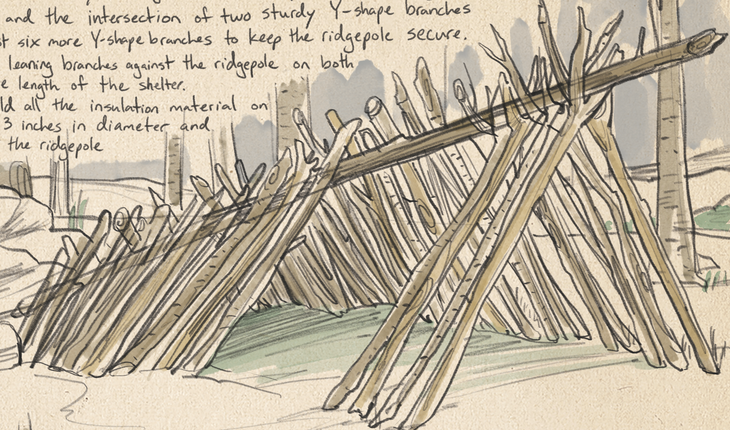Products You May Like
Any situation where you need to build an emergency shelter in the wilderness is a scary thing. But take heart, says Shane Hobel, the founder of Mountain Scout Survival School in New York’s Hudson Valley. People around the world thrive in the wilderness by building shelters with whatever their environment offers. Your backcountry hardware store’s offerings might differ depending on the terrain, but the construction principles stay the same: Build low, insulate plenty, and get off the ground.
A few tips to keep you safe in your makeshift home before you start construction: Make sure you’re far from dangers such as dead trees, or “widowmakers,” which could crush you. Don’t build near streams, which could flood and leave you hypothermic at best. Lastly, don’t bed down in harmful plants like stinging nettle, poison ivy, and giant hogweed. This shelter is supposed to save you, not make you an itchy mess.

Build Low
Think of your survival shelter as an all-natural sleeping bag, Hobel says. Building a refuge low to the ground locks in your body heat and keeps you warm enough to survive the night. Find a sturdy branch at least twice your height to serve as your shelter’s ridgepole. Prop it between a heavy rock and the intersection of two sturdy Y-shaped branches about 3 feet tall. Use at least six more Y-shape branches to keep the ridgepole secure. Next, establish your A-frame by leaning branches against the ridgepole on both sides, enough to cover the entire length of the shelter. These support branches will hold all the insulation material on top, so they should be 2 to 3 inches in diameter and long enough to lean against the ridgepole without falling through.

Insulate Plenty
The clothing you wear is the first layer of protection. Maximize your survival chances by layering with everything you have to stay warm (without sweating, which could lead to hypothermia). Debris is your next insulation layer. Pile it on top of the A-frame; last season’s swamp weeds, foxtails, and leafy branches work great. Hobel recommends at least 3 to 4 feet of insulation between you and the elements, but more is always better. Your extra effort will pay off if it rains.
Get Off the Ground
To avoid losing body heat to the ground, you’ll need to create an emergency sleeping pad out of the same debris you used for insulating your shelter. This pile should be at least 2 feet tall, says Hobel; your body will compress it as you sleep. Final step: Give your place a five-star rating when you check out alive in the morning.
